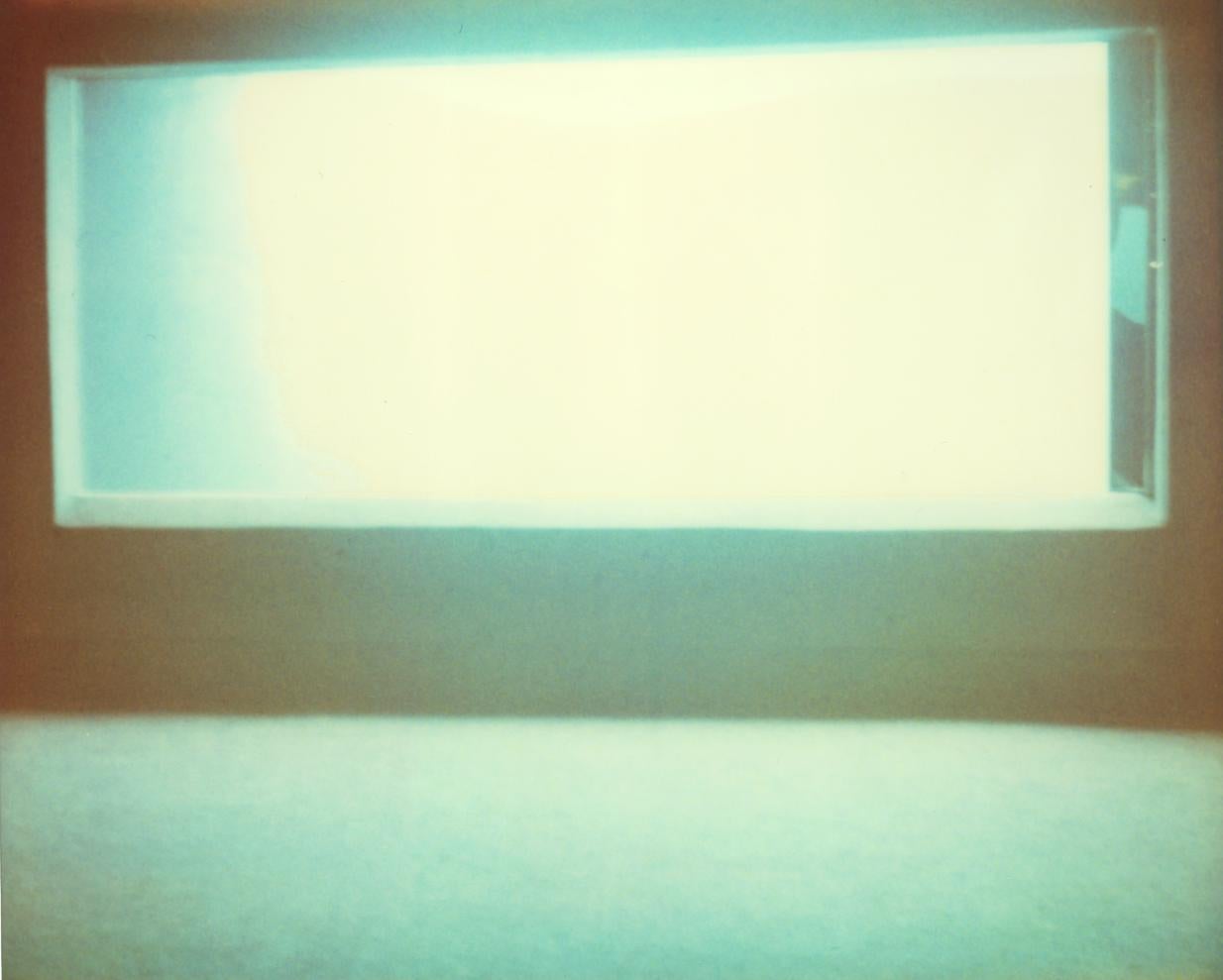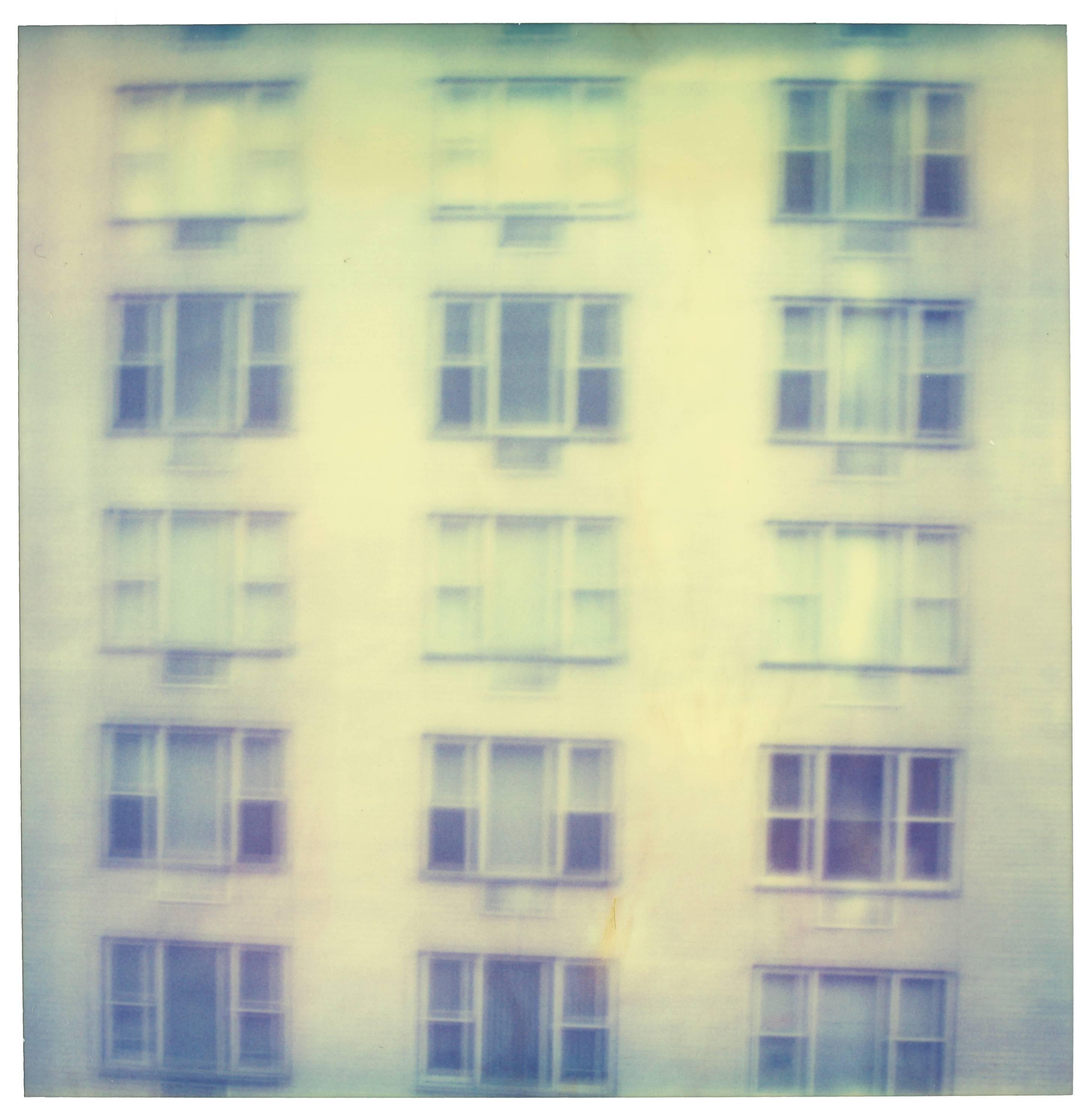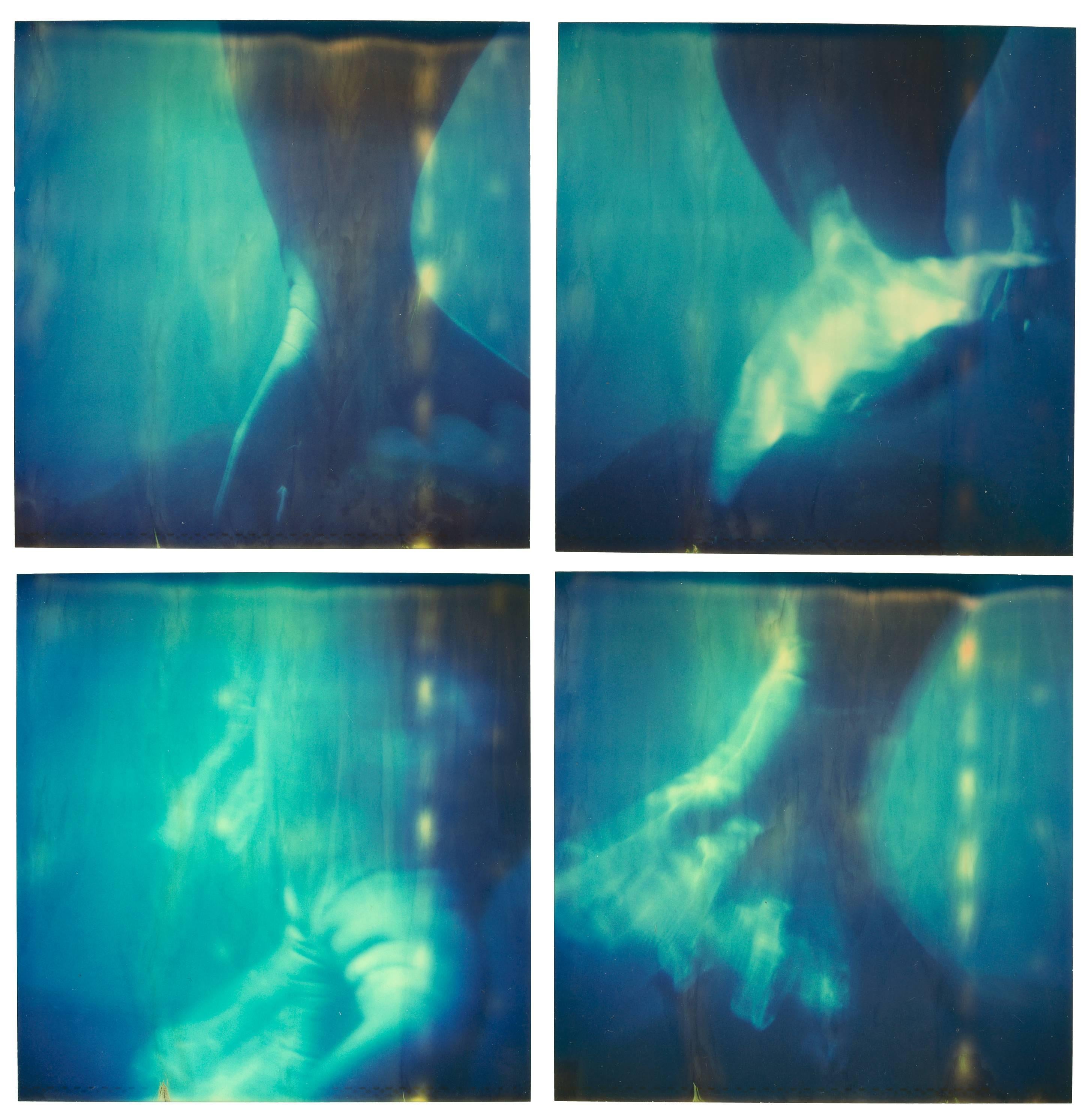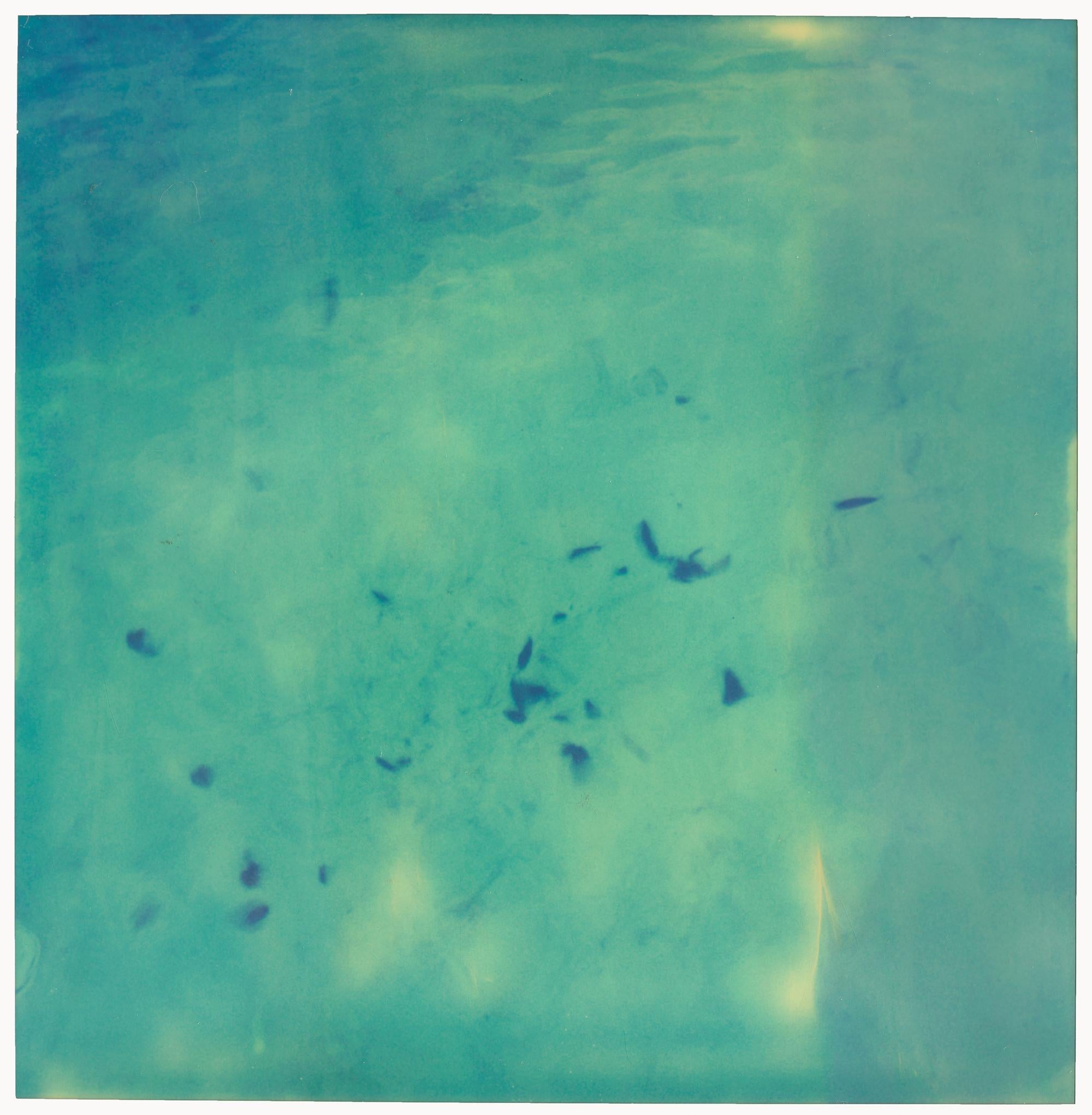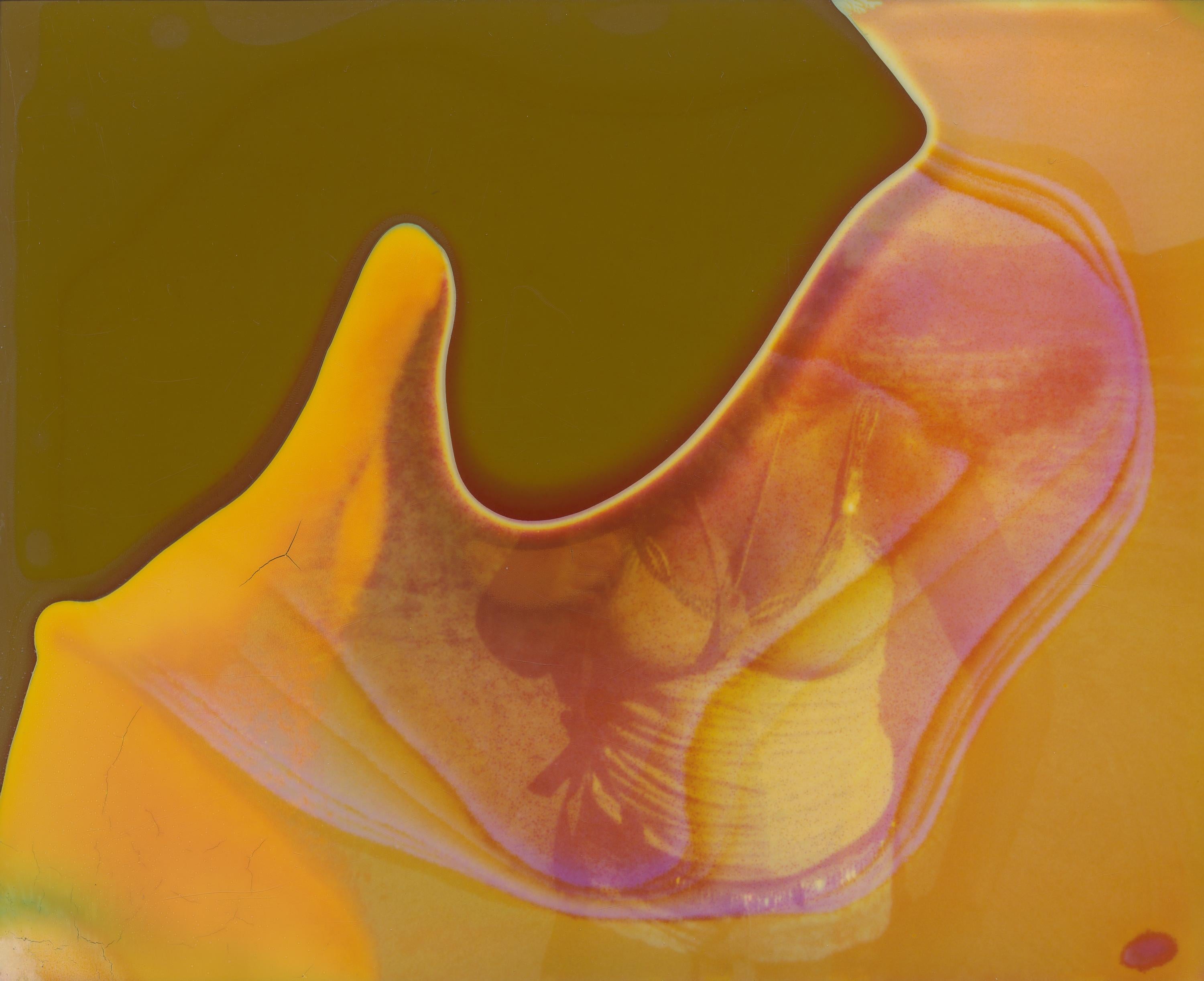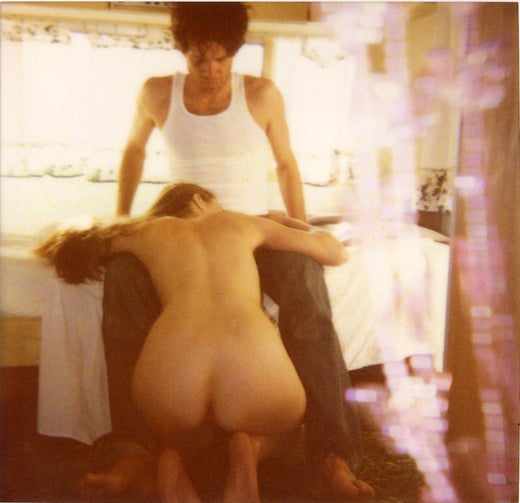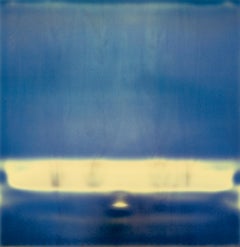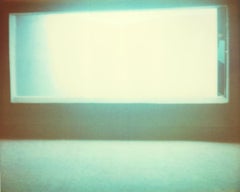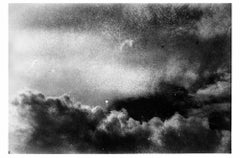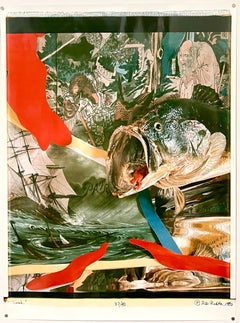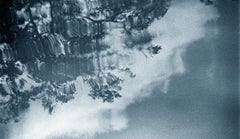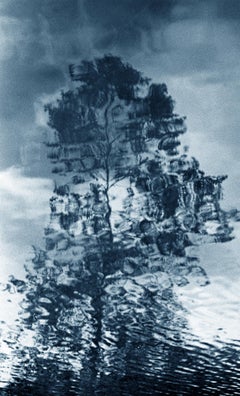Items Similar to Fish (Stay) - Contemporary, Expired, Polaroid, Photograph
Want more images or videos?
Request additional images or videos from the seller
1 of 2
Stefanie SchneiderFish (Stay) - Contemporary, Expired, Polaroid, Photograph2006
2006
$350
£265.71
€303.92
CA$489
A$543.88
CHF 283.99
MX$6,618.39
NOK 3,627.05
SEK 3,401.53
DKK 2,268.27
Shipping
Retrieving quote...The 1stDibs Promise:
Authenticity Guarantee,
Money-Back Guarantee,
24-Hour Cancellation
About the Item
Fish (Stay) - 2006,
20x24cm, Edition 4/5.
Archival C-Print, hand-printed by the artist on Fuji Crystal Archive Paper, matte surface, based on the Polaroid.
Signature label and certificate.
Inv. No. 5490.04.
Not mounted.
------------------------------------------------
A piece of art from the movie 'Stay' by Stefanie Schneider
Stefanie created the art for both main actors Naomi Watts and Ryan Gosling in the movie 'Stay' directed by Marc Forster. She also created the art for several dream sequences and the end credit sequence for the movie.
“I never remember the details of a Stefanie Schneider image, just the whole. She treads a third path between reality and dream that connects the two and truly sparks my artistic, visual freedom.” (Marc Forster)
Torsten Scheid, “Fotografie, Kunst, Kino. Revisited.”,
FilmDienst 3/2006, page 11-13
Photography Art Cinema. Revisited
Stay expands a traditional connection through new facets Interwoven between the media of photography and film is a veritable mesh-work of technical, motific, metaphorical and personal interrelationships. Extending from photo-film which, as in La Jetée by Chris Marker (France, 1962) is a montage of single, unmoving photographs all the way to the portrayal of photographic motifs in Hollywood cinema―most recently in Memento (USA, 2000) and One hour photo (USA, 2002)―is the range of filmic-photographic interactions on the one hand, and from the adaption of modes of cinematic production to the imitation of film stills on the other. For instance, with the legendary Untitled Film Stills (1978) of the American artist Cindy Sherman, who later made her debut as a film director with Office Killer (USA, 1997) and thereby, like many others, changed sides: Wim Wenders, Robert Frank and Larry Clark are doubtlessly the most successful of these photographic-filmic border crossers. This brief survey provides only a vague indication of the dimensions of this intermedial field, which in fact extends much further and is constantly being cultivated.
Also as a motif in film, photography has experienced a historical transformation: Photographers were once considered to be technicians who mastered a craft but never achieved the status of artists. Photographer-figures were caught in the allure of beautiful appearance, incapable of penetrating to the actual essence of things. Such depth was reserved for literature or painting. When photography in film touched upon the sphere of art, then most often as its contrasting model, as the metaphor for a superficial access to the world. Coming to mind are Fred Astaire as a singing fashion photographer in Stanley Donen’s musical film Funny Face (USA, 1957), or the restless lifestyle-photographer in Michelangelo Antonioni’s genre-classic Blow up (GB, 1966). For the doubting Thomas, only that exists which can be photographed. He ultimately enters the world of fantasy and thereby the field of art only unwillingly, when he becomes entangled in the world of his images. The last of his detail-enlargements shows only the photographic grain and has lost all connection to reality. The photograph looks as if it had been painted by Bill, the painter who is both friend and antagonist to the protagonist.
Photography as Art
It was first around the end of the last century that numerous filmmakers discovered photography as a genuine art form. In The Bridges of Madison County (USA, 1995) a sensitive Clint Eastwood stands, camera in hand, on the threshold of artistic status, and in Smoke (USA, 1994) a tobacco merchant ripens into a philosopher through his involvement in photography. Finally, in John Water’s parody of the art market, Pecker (USA, 1998), a provincial tom-fool is hyped into celebrated stardom amid the New York art scene because of his blurred snapshots. This film about a postmodern Kaspar Hauser in photographic art (with clear parallels to Richard Billingham, the British shooting star of the nineteen-nineties), not only takes into account the exponentially expanded significance of photography in the art market, but also attributes to photography an extreme degree of conformity to the “operating system” of the visual arts. This admittedly ironic equation of photography and the visual arts is new. It is repeated with much more earnestness in Lisa Chollondencko’s High Art (USA) from the same year. Artistic photography has finally become established in a cinematic context.
Stay
Stay (USA, 2005) could have fitted in seamlessly here. Considering that the films High Art and Pecker establish photography as an ideal art form at the end of the millennium, director Marc Forster (Monster’s Ball, Finding Neverland) takes a step backward; he revives an anti-technical, intuitive concept of art, including the customary clichés about madness and genius. This choice documents less an anachronistic notion of art (especially considering that painting is currently experiencing a Renaissance) than instead the appraisal that paintings are more suitable for representing the free objectification of the mind. Stay is not an artist-film but rather a psycho-thriller in which the borders between dream and reality become blurred.
The psychiatrist Sam Foster (Ewan McGregor) has saved his girlfriend, the artist Lila (played by Naomi Watts) from committing suicide. Now he is attempting to keep another patient, the art student Henry Letham (Ryan Gosling) from killing himself, but succumbs in that endeavor more and more to a whirlpool of inexplicable events. Any further words would already be interpretation and would reduce the significatory potential of the film. The film is loaded with meaning down to the tiniest details―including the notoriously short pants of the protagonist―or it willingly offers itself as a projection screen for speculations. Line-crossings, subjective camera-views of utterly strange figures, and pan-shots in which space and time shift abruptly all serve to confuse the viewer. One scene switches with no transition into paper photography; other scenes hesitate, repeat themselves. The temporal continuum of the film is caught in loops. Figures merge into each other. Miracles occur: blind people regain their sight, the dead are reawakened to life. If it is the continuity of events which distinguishes dream from reality, then everything which the psychiatrist Sam experiences is a dream.
It is precisely here, in this intermediate world of imagination and reality, that the film brings paintings into play, and with them the Polaroid photographs of Stefanie Schneider. For even if the paintress Lila drips paint all over herself in the film, in fact her paintings are without exception based on photographic models which―thanks to modern technology―have been printed onto canvas.
Bizarre Dream-Worlds
Stefanie Schneider’s vague and evanescent Polaroids work towards a painterly impact. The artist, who resides alternately in Berlin and Los Angeles, exclusively uses out-of-date film material. She takes into account chance occurrence, the scarcely predictable waywardness of damaged emulsions. Her associative Polaroids portray a bizarre, film-like world which further enhances the irrealism of Stay. Independently of each other, but not without reason, both Marc Forster and Stefanie Schneider are repeatedly compared with David Lynch. Stranger than Paradise is the title of Schneider’s new photographic volume which, punctually with the start of the film, has been published by Hatje Cantz. The title borrowed from Jim Jarmusch is no accident: Cinema, not artistic photography, is the world from which the former cutter draws her visual models. And whoever has carefully studied the jazzy photographer of her series 29 Palms, CA can recognize beneath the orange-red wigs the cinematic actress Radha Mitchell (Finding Neverland, High Art).
A few motifs from this series, which was presented in an extensive edition by the Lumas gallery, are already sold out. The popularity of the artist is rising. But even if Schneider’s gallery makes this claim, her photography does not in fact play a major role in the film Stay. Instead the presence of the Polaroid photographs onscreen is limited to short photographic sequences, to the―admittedly magical―end credits, and to a few paintings on the set. It is precisely here at the periphery, on the symbolical level, however, that the film unfolds its central meaning―for example, when in Lila’s studio photographs of walruses may be seen, a motif which is familiar to the viewer from a previous scene with the art student Henry. In this new context, the images acquire an impact like the visualization of a strange memory. The pictures do not seem to belong to Lila and already anticipate in an allusive manner the peculiar transformation which her paintings undergo at the end of the film.
The overlapping of the protagonists has a correspondence in the interpenetration of inner and outer worlds: In another scene, in which Henry visits a table-dance bar, there is a photographic sequence. The flood of sharply highlighted, ever-changing images cannot be unambiguously situated, however. On the one hand, it can be read as a projection in the depicted space; and on the other hand, it presents itself as the stream of consciousness of the protagonist, whose blurred scraps of memory it portrays.
Art as Key
The photographs do not function in Stay as props for the plot, but instead they are metaphors for the interpenetration of dream and reality. They are not so much motifs as rather means of representation. On the one hand, they are almost seamlessly integrated into the portrayal, but on the other hand―as works of art―they play a key role in the reception of the film. Whoever considers the cinema to be simply an escapist pleasure must have the impression, with regard to Stay, of being in the wrong film. Stay repudiates all expectations regarding genre and demands a fundamental shift of attitude. One can argue about whether this claim is justified, but the film demands to be viewed as a work of art. Not in the sense of contemplative immersion, but in terms of an active reception. Meaning cannot be derived directly from the film. Meaning is an addition made by the viewer. If Stay has a special message, then it is this: Everyone constructs his or her own film. In fact, in Stay there is a short scene which takes place in the art academy and may be understood as an interpretative instruction. On the basis of a painting, the professor offers a lesson which can be expressed in two simple formulas. First, everything is significant. And second, everything is somehow connected with everything else. The individual elements of the film must be decoded and set into relationship with each other.
After the Film is Before the Film
With director Marc Forster and photographic artist Stefanie Schneider, two coequal partners are at work. The photographer brings her style-generating aesthetic into the cinematic representation. She appears as the author of her images, not as the executor of instructions from the director. This status is also evident in the participation of the artist in the press conference and in the fact that the premiere party took place in Stefanie Schneider’s gallery Lumas. Whoever came early or stayed late could here take an unobstructed look at the pictures and review the film at leisure. With regard to the photographs, one is inclined to see the film a second time. But also in the retrospective photographs after the film, the puzzle-game continues. “This is the way it was,” each photograph seems to say. But were things really that way? In fact, the poetically blurred Polaroid photographs do not provide a documentation, but rather an interpretation of the film from an artistic perspective which is lost in reverie. On the one hand, they make selections from the cinematic plot, and on the other hand, they transcend these happenings.
The film photos become autonomous and make reference, not to filmic “facts,” but to other possibilities―to that which might have been, to the inherent fictionality of the film.
---------------------------
Alchemist of Light, Architect of Dreams
Some artists document the world as it is; Stefanie Schneider reveals the world as it feels. Her work is not merely a collection of images but a sensory landscape, a cinematic excavation of longing, memory, and the quiet beauty of imperfection. In an era obsessed with digital precision, she has built an empire on the unpredictable grace of expired Polaroid film—where chemistry and fate conspire to blur the edges between past and present, dream and reality.
Schneider’s artistry is a rebellion wrapped in tenderness. Born at the very moment Polaroid was gasping its last breath, she embraced its fragility, turning chemical distortions into portals of nostalgia and poetic dissonance. Yet, her art is not just about the medium—it is a philosophy. Each faded hue and melting silhouette speaks to the ephemeral nature of existence, echoing the lost highways of Wim Wenders, the quiet devastation of a faded love letter, the cinematic stillness before a storm.
From the sun-drenched desolation of the California desert to the spectral glow of half-remembered motels, her work captures a world teetering between illusion and truth. A place where time lingers, where stories are suspended in soft-focus light, refusing to resolve into simple conclusions. The figures in her images—lovers, wanderers, ghosts of a golden-hour past—exist on the margins, caught in an unspoken dialogue with the viewer. We do not just see them; we recognize them.
Schneider has not merely preserved a dying medium—she has elevated it to something mythic, something wholly her own. Her work is at once contemporary and timeless, evoking the ghosts of Warhol’s silkscreens, the quiet grandeur of Edward Hopper, the melancholic resonance of a half-forgotten song playing on an old jukebox. In a world consumed by the relentless march of progress, she reminds us that beauty often lives in the flaws, in the spaces between moments, in the whispers of the past.
Some artists capture history. Stefanie Schneider captures memory itself—before it fades, before it slips through our fingers like dust illuminated by desert light. And in doing so, she has changed not just how we see photography, but how we see ourselves.
Stefanie Schneider earned her MFA in Communication Design from the renowned Folkwang Schule in Essen, Germany, an institution known for its interdisciplinary approach to art and design. Her work has been widely exhibited in prestigious museums and art institutions across Europe and beyond, underscoring her significant impact on contemporary visual culture. Notable exhibitions include the Museum für Photographie in Braunschweig, the Museum für Kommunikation in Berlin, and the Institut für Neue Medien in Frankfurt. Her cinematic and dreamlike imagery has also been featured at the Nassauischer Kunstverein in Wiesbaden, Kunstverein Bielefeld, and the Museum für Moderne Kunst in Passau. Internationally, Schneider’s work has been recognized at Les Rencontres d'Arles—one of the most esteemed photography festivals in the world— and the Foto-Triennale in Esslingen. Her artistic vision extends beyond traditional gallery spaces, as seen in her participation in the Bombay Beach Biennale in 2018, an avant-garde art festival redefining creative expression in the California desert.
- Creator:Stefanie Schneider (1968, German)
- Creation Year:2006
- Dimensions:Height: 7.88 in (20 cm)Width: 9.45 in (24 cm)Depth: 0.04 in (1 mm)
- Medium:
- Movement & Style:
- Period:
- Condition:
- Gallery Location:Morongo Valley, CA
- Reference Number:1stDibs: LU652315921712
Stefanie Schneider
Stefanie Schneider received her MFA in Communication Design at the Folkwang Schule Essen, Germany. Her work has been shown at the Museum for Photography, Braunschweig, Museum für Kommunikation, Berlin, the Institut für Neue Medien, Frankfurt, the Nassauischer Kunstverein, Wiesbaden, Kunstverein Bielefeld, Museum für Moderne Kunst Passau, Les Rencontres d'Arles, Foto -Triennale Esslingen., Bombay Beach Biennale 2018, 2019.
About the Seller
4.9
Platinum Seller
Premium sellers with a 4.7+ rating and 24-hour response times
Established in 1996
1stDibs seller since 2017
1,033 sales on 1stDibs
Typical response time: 3 hours
- ShippingRetrieving quote...Shipping from: Morongo Valley, CA
- Return Policy
Authenticity Guarantee
In the unlikely event there’s an issue with an item’s authenticity, contact us within 1 year for a full refund. DetailsMoney-Back Guarantee
If your item is not as described, is damaged in transit, or does not arrive, contact us within 7 days for a full refund. Details24-Hour Cancellation
You have a 24-hour grace period in which to reconsider your purchase, with no questions asked.Vetted Professional Sellers
Our world-class sellers must adhere to strict standards for service and quality, maintaining the integrity of our listings.Price-Match Guarantee
If you find that a seller listed the same item for a lower price elsewhere, we’ll match it.Trusted Global Delivery
Our best-in-class carrier network provides specialized shipping options worldwide, including custom delivery.More From This Seller
View AllDreamscape (Wastelands) - Contemporary, Abstract, Polaroid, Expired, Photograph
By Stefanie Schneider
Located in Morongo Valley, CA
Dreamscape (Wastelands), 2003
20x20cm
Edition of 10, plus 2 Artist Proofs.
Archival C-Print, based on the original Polaroid.
Certificate and Signature label.
Artist inventor...
Category
Early 2000s Contemporary Color Photography
Materials
Archival Paper, Photographic Paper, C Print, Color, Polaroid
Silence Void (Stay) - Polaroid
By Stefanie Schneider
Located in Morongo Valley, CA
Silence Void (Stay) - 2006
20x20cm,
Edition of 10,
Archival C-Print, based on the Polaroid.
Certificate and Signature label.
Artist Inventory No. 2116.
Not mounted.
Stefanie...
Category
Early 2000s Contemporary Color Photography
Materials
Photographic Film, Archival Paper, C Print, Color, Polaroid
Across (Strange Love) - analog, based on am original Polaroid
By Stefanie Schneider
Located in Morongo Valley, CA
Across (Strange Love), 2006 -
126x125cm
Edition of 5.
Analog C-Print printed on Fuji Archive Paper, hand-printed by the artist, based on a Polaroid.
Signature label and certif...
Category
Early 2000s Contemporary Color Photography
Materials
Archival Paper, Photographic Paper, C Print, Color, Polaroid
Blue (Stay) - 21st Century, Contemporary, Polaroid, Photography, Color
By Stefanie Schneider
Located in Morongo Valley, CA
Stefanie Schneider's work was used for Marc Forster's movie 'Stay'. Featuring Ewan McGregor, Naomi Watts and Ryan Gosling. Naomi and Ryan were both portraying artists and Stefanie's ...
Category
Early 2000s Contemporary Still-life Photography
Materials
Metal
Autumn Drift (The Last Picture Show) - Polaroid, analog, landscape
By Stefanie Schneider
Located in Morongo Valley, CA
Autumn Drift (The Last Picture Show) 2005
20x20cm,
Edition of 10, plus 2 Artist Proofs.
Archival C-Print, based on the original Polaroid.
Certificate and signature label.
Artist ...
Category
Early 2000s Contemporary Color Photography
Materials
Archival Paper, Photographic Paper, C Print, Color, Polaroid
Living in a Dream (Till Death do us Part) - Contemporary, Polaroid, Women
By Stefanie Schneider
Located in Morongo Valley, CA
Living in a Dream (Till Death do us Part) - 2005
20x20cm,
Edition of 10,
Archival C-Print print, based on the Polaroid.
Certificate and Signature label, artist Inventory No. 9781.
Not mounted.
on offer is a piece from the movie "Till Death do us Part"
Stefanie Schneider’s Till Death Do Us Part
or “There is Only the Desert for You.”
BY DREW HAMMOND
Stefanie Schneider’s Til Death to Us Part is a love narrative that comprises three elements:
1.
A montage of still images shot and elaborated by means of her signature technique of using Polaroid formats with outdated and degraded film stock in natural light, with the resulting im ages rephotographed (by other means) enlarged and printed in such a way as to generate further distortions of the image.
2.
Dated Super 8 film footage without a sound track and developed by the artist.
3.
Recorded off-screen narration of texts written by the actors or photographic subjects, and selected by the artist.
At the outset, this method presupposes a tension between still and moving image; between the conventions about the juxtaposition of such images in a moving image presentation; and, and a further tension between the work’s juxtaposition of sound and image, and the conventional relationship between sound and image that occurs in the majority of films. But Till Death Do Us Part also conduces to an implied synthesis of still and moving image by the manner in which the artist edits or cuts the work.
First, she imposes a rigorous criterion of selection, whether to render a section as a still or moving image. The predominance of still images is neither an arbitrary residue of her background as a still photographer—in fact she has years of background in film projects; nor is it a capricious reaction against moving picture convention that demands more moving images than stills. Instead, the number of still images has a direct thematic relation to the fabric of the love story in the following sense. Stills, by definition, have a very different relationship to time than do moving images. The unedited moving shot occurs in real time, and the edited moving shot, despite its artificial rendering of time, all too 2009often affords the viewer an even greater illusion of experiencing reality as it unfolds. It is self-evident that moving images overtly mimic the temporal dynamic of reality.
Frozen in time—at least overtly—still photographic images pose a radical tension with real time. This tension is all the more heightened by their “real” content, by the recording aspect of their constitution. But precisely because they seem to suspend time, they more naturally evoke a sense of the past and of its inherent nostalgia. In this way, they are often more readily evocative of other states of experience of the real, if we properly include in the real our own experience of the past through memory, and its inherent emotions.
This attribute of stills is the real criterion of their selection in Til Death Do Us Part where consistently, the artist associates them with desire, dream, memory, passion, and the ensemble of mental states that accompany a love relationship in its nascent, mature, and declining aspects.
A SYNTHESIS OF MOVING AND STILL IMAGES BOTH FORMAL AND CONCEPTUAL
It is noteworthy that, after a transition from a still image to a moving image, as soon as the viewer expects the movement to continue, there is a “logical” cut that we expect to result in another moving image, not only because of its mise en scène, but also because of its implicit respect of traditional rules of film editing, its planarity, its sight line, its treatment of 3D space—all these lead us to expect that the successive shot, as it is revealed, is bound to be another moving image. But contrary to our expectation, and in delayed reaction, we are startled to find that it is another still image.
One effect of this technique is to reinforce the tension between still and moving image by means of surprise. But in another sense, the technique reminds us that, in film, the moving image is also a succession of stills that only generate an illusion of movement. Although it is a fact that here the artist employs Super 8 footage, in principle, even were the moving images shot with video, the fact would remain since video images are all reducible to a series of discrete still images no matter how “seamless” the transitions between them.
Yet a third effect of the technique has to do with its temporal implication. Often art aspires to conflate or otherwise distort time. Here, instead, the juxtaposition poses a tension between two times: the “real time” of the moving image that is by definition associated with reality in its temporal aspect; and the “frozen time” of the still image associated with an altered sense of time in memory and fantasy of the object of desire—not to mention the unreal time of the sense of the monopolization of the gaze conventionally attributed to the photographic medium, but which here is associated as much with the yearning narrator as it is with the viewer.
In this way, the work establishes and juxtaposes two times for two levels of consciousness, both for the narrator of the story and, implicitly, for the viewer:
A) the immediate experience of reality, and
B) the background of reflective effects of reality, such as dream, memory, fantasy, and their inherent compounding of past and present emotions.
In addition, the piece advances in the direction of a Gesammtkunstwerk, but in a way that reconsiders this synaesthesia as a unified complex of genres—not only because it uses new media that did not exist when the idea was first enunciated in Wagner’s time, but also because it comprises elements that are not entirely of one artist’s making, but which are subsumed by the work overall. The totality remains the vision of one artist.
In this sense, Till Death Do Us Part reveals a further tension between the central intelligence of the artist and the products of other individual participants. This tension is compounded to the degree that the characters’ attributes and narrated statements are part fiction and part reality, part themselves, and part their characters. But Stefanie Schneider is the one who assembles, organizes, and selects them all.
THE RELATIONSHIP BETWEEN THIS IDEA (above) AND PHOTOGRAPHY
This selective aspect of the work is an expansion of idea of the act of photography in which the artistic photographer selects that which is already there, and then, by distortion, definition or delimitation, compositional and lighting emphasis, and by a host of other techniques, subsumes that which is already there to transform it into an image of the artist’s contrivance, one that is no less of the artist’s making than a work in any other medium, but which is distinct from many traditional media (such as painting) in that it retains an evocation of the tension between what is already there and what is of the artist’s making. Should it fail to achieve this, it remains, to that degree, mere illustration to which aesthetic technique has been applied with greater or lesser skill.
The way Til Death Do Us Part expands this basic principle of the photographic act, is to apply it to further existing elements, and, similarly, to transform them. These additional existing elements include written or improvised pieces narrated by their authors in a way that shifts between their own identities and the identities of fictional characters. Such characters derive partially from their own identities by making use of real or imagined memories, dreams, fears of the future, genuine impressions, and emotional responses to unexpected or even banal events. There is also music, with voice and instrumental accompaniment. The music slips between integration with the narrative voices and disjunction, between consistency and tension. At times it would direct the mood, and at other times it would disrupt.
Despite that much of this material is made by others, it becomes, like the reality that is the raw material of an art photo, subsumed and transformed by the overall aesthetic act of the manner of its selection, distortion, organization, duration, and emotional effect.
* * *
David Lean was fond of saying that a love story is most effective in a squalid visual environment. In Til Death Do Us Part, the squalor of the American desert...
Category
Early 2000s Contemporary Color Photography
Materials
Archival Paper, Photographic Paper, C Print, Color, Polaroid
You May Also Like
Expired_14_2020 - Photograph by Serena Zeppilli
Located in Roma, IT
This photograph Expired_14_2020 was taken by the Italian photographer Serena Zeppilli.
It is part of the series "I was looking for something that I...
Category
21st Century and Contemporary Contemporary Figurative Photography
Materials
Photographic Paper
Large Format Polaroid Photograph Still Life Color Photo Dye Print Robert Fichter
By Robert Fichter
Located in Surfside, FL
Robert Fichter
Title: Jonah
Date: 1980
Original Polaroid Large Format Print (Photo-Internal dye diffusion transfer)
Location: Cambridge Massachusetts United States
Dimensions: Image: 27 1/2 x 20 1/2 in. (69.9 x 52.1 cm), Paper: 29 1/4 x 21 1/2 in. (74.3 x 54.6 cm)
This depicts a large mouth fish with a toy soldier and Asian art (tattoo art?) in an abstract assemblage collage.
From "Five Still Lifes"
New York: Paradox Editions, Ltd., 1980. 5 original Polaroid color prints. Each hand signed, titled, dated and numbered 37/40 in ink in the margin. Each approximately 24 x 20in (image size). Each is on original as there are no negatives in this process. The photographers included: Robert Cumming, Robert Fichter, Betty Hahn, Victor Schrager...
Category
1980s Contemporary Color Photography
Materials
Color, Polaroid
Elusive XXIV, Photograph, Archival Ink Jet
By Katina Desmond
Located in Yardley, PA
The images in Katina Desmond's "Elusive" series are uniquely toned by the artist and dye-infused onto sheer matte aluminum surface. Contemporary float mounting, ready to hang. The al...
Category
2010s Other Art Style Color Photography
Materials
Archival Ink
Elusive XXII, Photograph, Archival Ink Jet
By Katina Desmond
Located in Yardley, PA
The images in Katina Desmond's "Elusive" series are uniquely toned by the artist and dye-infused onto sheer matte aluminum surface. Contemporary float mounting, ready to hang. The al...
Category
2010s Other Art Style Color Photography
Materials
Archival Ink
Vintage Limited Edition Nature Photograph Fish Still Life
Located in Buffalo, NY
Wonderful and rare photograph by Henry Horenstein (b.1947). Limited edition of 35 pieces. Gallery label verso. Framed. Measuring 16 by 24 inches overall and 15.5 by 23.5 photo alone.
Category
1960s Photorealist Still-life Photography
Materials
Photographic Paper, Silver Gelatin
Blue Moon - Large Scale Color Polaroid Photographic Print Framed
By Pia Clodi
Located in Zürich, CH
Blue Moon - Still Life Photographic Print Framed
120x120cm
Austrian Contemporary Photographer Pia Clodi, demonstrates immense skill through her analog photography, which is often p...
Category
21st Century and Contemporary Contemporary Abstract Photography
Materials
Photographic Film, Photographic Paper, Polaroid
$1,821 Sale Price
20% Off

